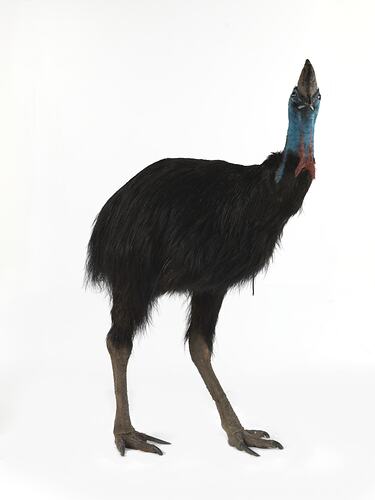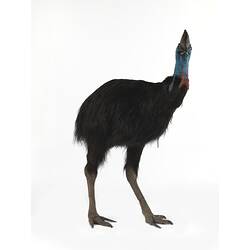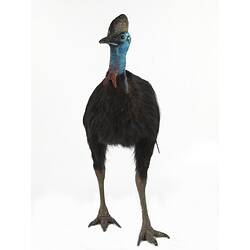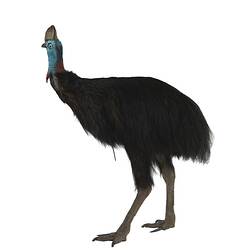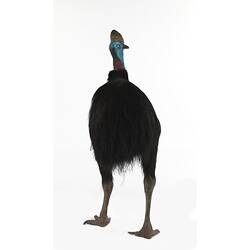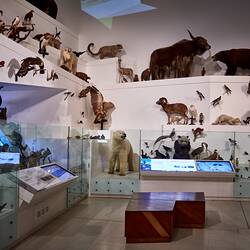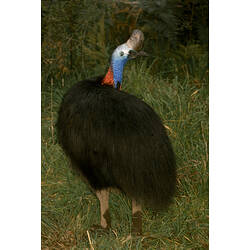Summary
The Southern Cassowary is a very large ratite, meaning it belongs to the group that includes Emu, Kiwi, and ostriches. Like all ratites, it is ground-dwelling. Its wings are extremely reduced and it cannot fly. Adults have black feathers and a bright blue neck with a red nape and large, obvious red wattles hanging from the front. This specimen is thought to be a male because of the length of its wattles. It naturally occurs in rainforests in New Guinea (east Indonesia and Papua New Guinea) and north-eastern Australia.
This specimen was donated to the Museum in 1887 by the Zoological and Acclimatisation Society of Victoria which managed the Melbourne Zoological Gardens, now commonly known as Melbourne Zoo. It originally came from Queensland.
The Southern Cassowary was described by Linnaeus in 1758. The genus and species name, Casuarius casuarius, are derived from its Malay name of "kesuari".
The total population of Southern Cassowaries is thought to be around 20,000 to 49,000 individuals. The risk to Australian populations through habitat destruction has reduced since their lowest point in 1988 when the species' habitat was given protection by a World Heritage listing and Australian populations now appear stable. However, some populations in New Guinea are thought to be extinct and remaining populations are still vulnerable to the destruction of their habitat by logging. In 2017 the International Union for Conservation of Nature (IUCN) reassessed the status of the Southern Cassowary and updated it from Vulnerable to Least Concern.
Specimen Details
-
Taxon Name
-
Preferred Common name
Southern Cassowary
-
Number Of Specimens
1
-
Sex
Male
-
Stage Or Age
Adult
-
Specimen Nature
Nature: Mount, Form: Dry
-
Collected By
Unknown
-
Date Visited From
2/07/1886
-
Date Visited To
2/07/1886
-
Category
-
Scientific Group
-
Discipline
-
Collecting Areas
-
Type of Item
Taxonomy
-
Kingdom
-
Phylum
-
Subphylum
-
Class
-
Subclass
-
Superorder
-
Order
-
Family
-
Subfamily
-
Genus
-
Species Name
casuarius
Geospatial Information
-
Country
-
State
